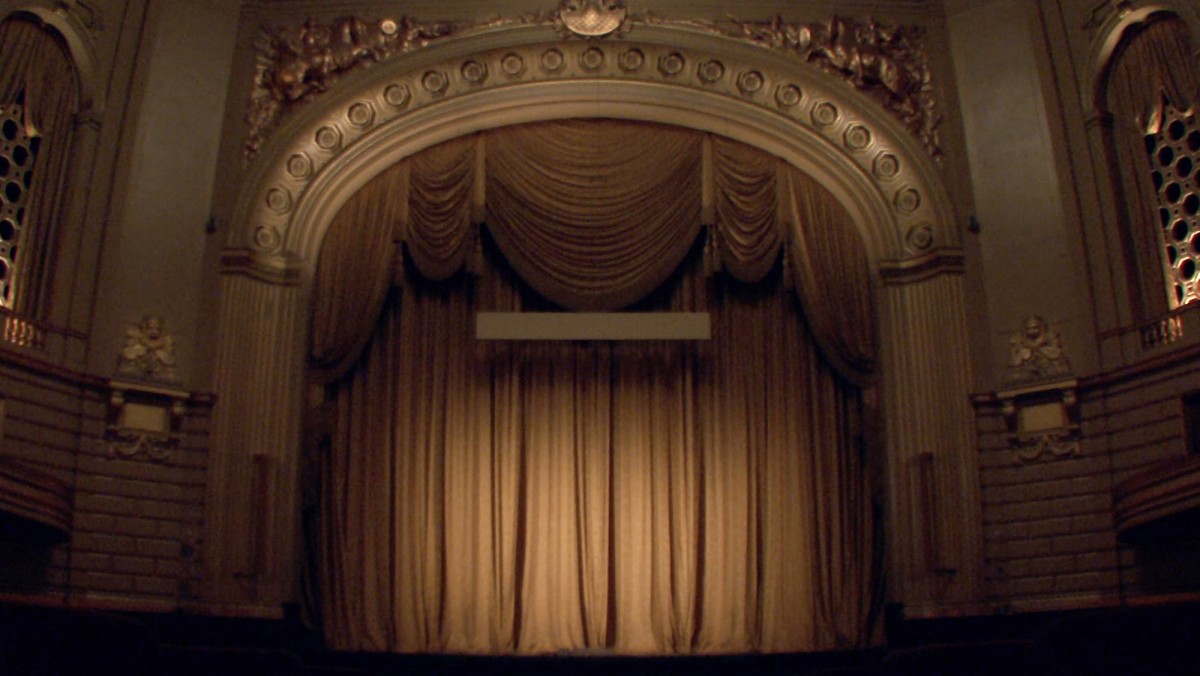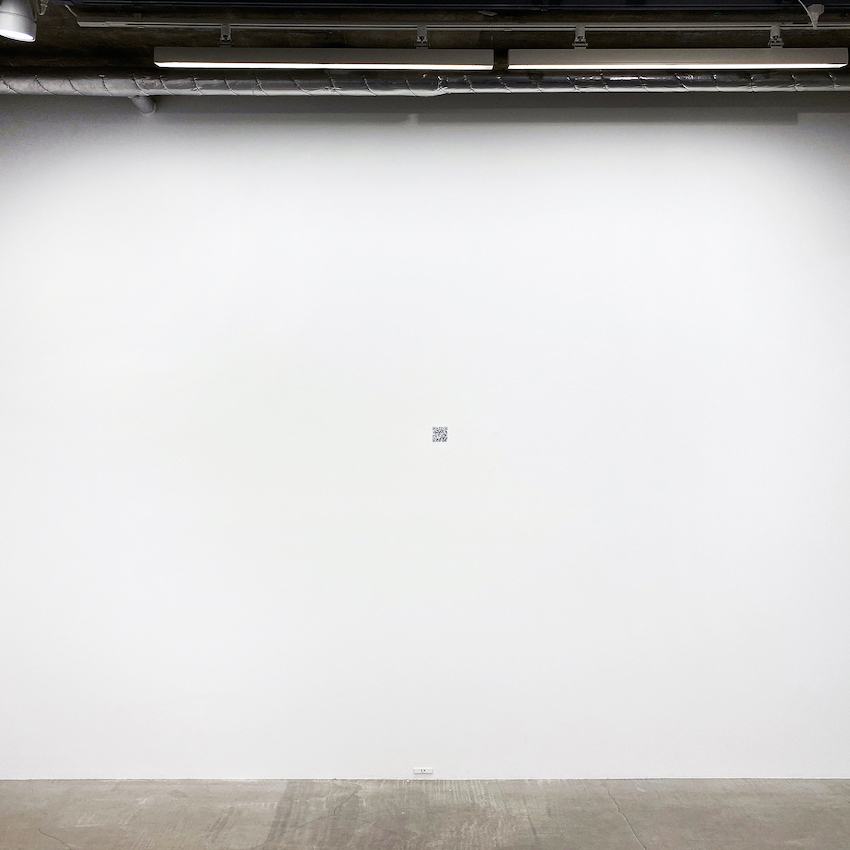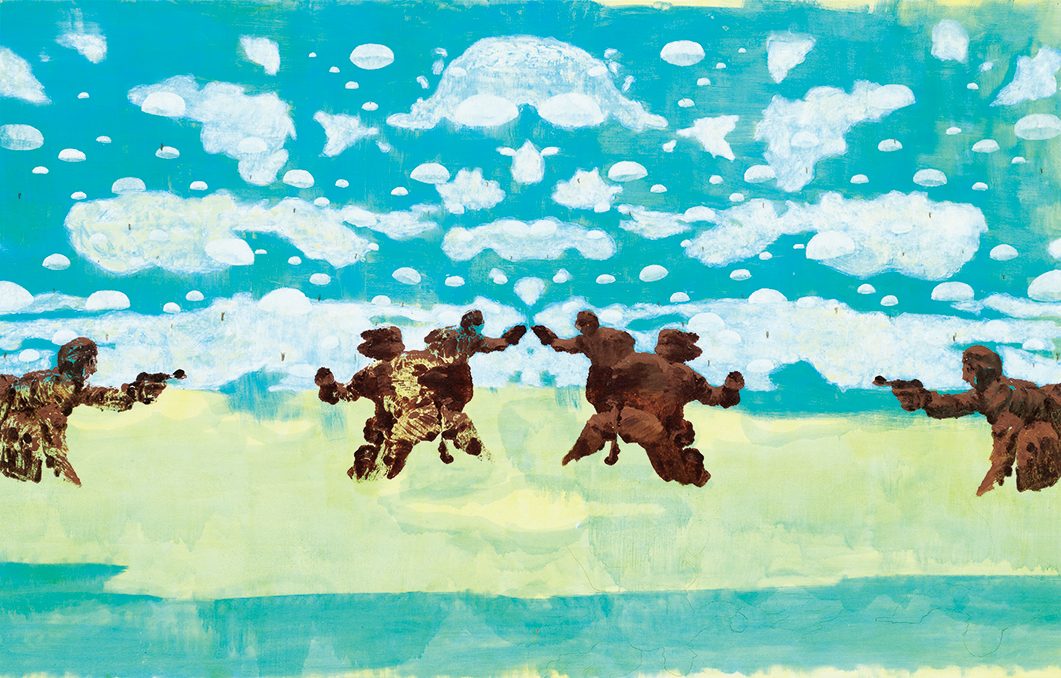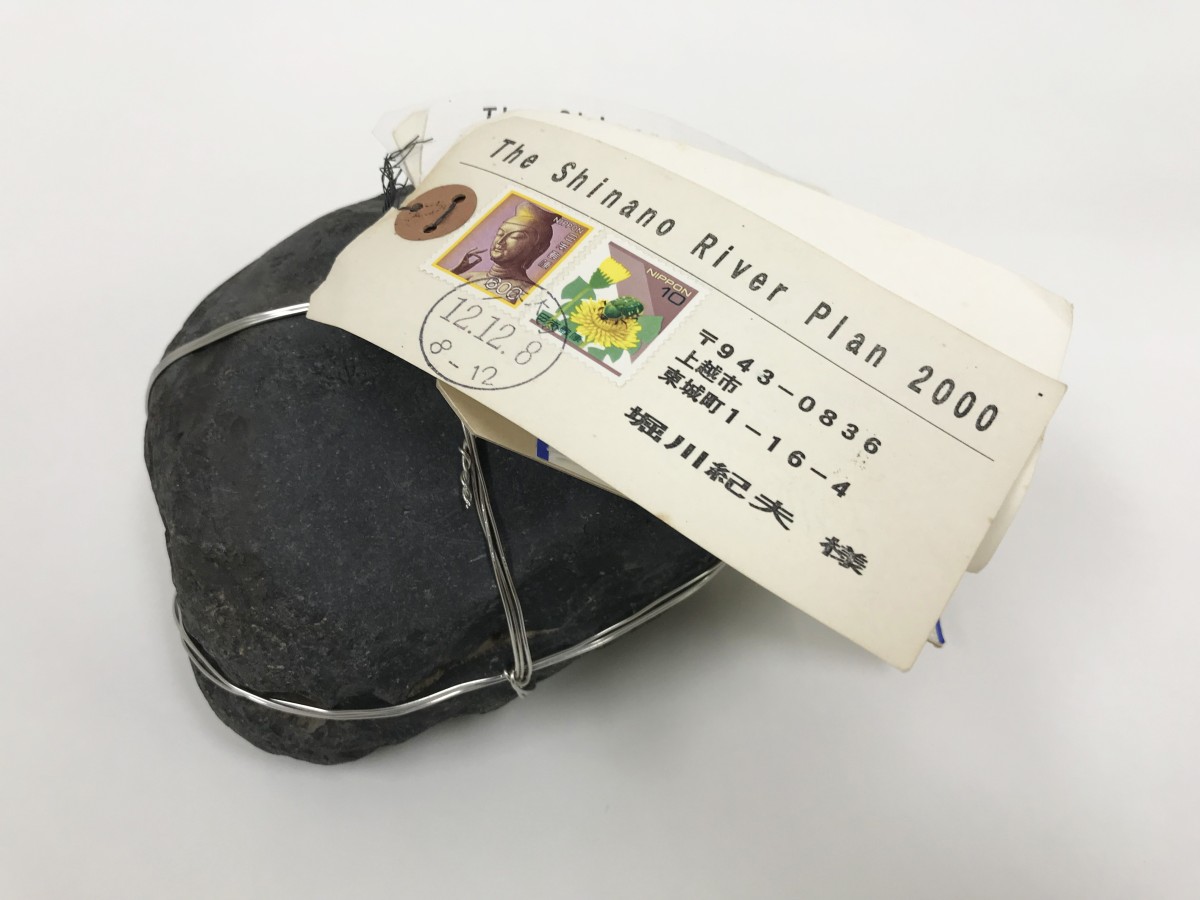
Shinoda Taro, SF – San Francisco or Science Fiction or How do I Understand the History, 2013, Single channel video, 13’33”
無題 / Untitled
Shinoda Taro, Ozawa Tsuyoshi, Takayama Akira, Ikezoe Akira, Horikawa Michio
Saturday, January 18 – Saturday, February 15, 2025
Opening Reception: Saturday, January 18, 17:00-19:00
Hours: Tuesday-Saturday 12:00-19:00 (Closed on Mon, Sun, Public holidays)
Installation View
Press Release
Download Press release (日本語)
Download Press release (English)
For its first exhibition of 2025, MISA SHIN GALLERY is pleased to present “無題/Untitled”, a group exhibition by Shinoda Taro, Takayama Akira, Ozawa Tsuyoshi, Ikezoe Akira, and Horikawa Michio. As we enter the second quarter of the 21st century, the ongoing prevalence of war remains a pressing concern. Commemorating the 80th anniversary of the end of World War II, this exhibition explores how these artists engage with themes of war and historical memory, examining the messages conveyed through their work.
Shinoda’s video work SF – San Francisco or Science Fiction or How do I Understand the History (2013) reflects on the historical significance of the San Francisco Peace Treaty, which ended the U.S. occupation of Japan, and the U.S.-Japan Security Treaty, which formalized the presence of American military bases in Japan—both signed on the same day in 1951. Filmed at former military sites in San Francisco and in the room used by General Douglas MacArthur during the occupation, the video captures these historical connections through an abstract and understated lens, evoking a range of impressions and meanings for the viewer.

Takayama Akira, War Painting/Heterotopia -The National Museum of Modern Art, Tokyo- , 2021-, Mixed media installation, Dimension variable
Accessing the QR code on the white walls of the gallery allows visitors to listen to a poetry reading. Takayama Akira’s War Paintings / Heterotopia – The National Museum of Modern Art, Tokyo invites the audience to imagine war paintings stored in the museum’s archives while listening to poems about the painting written by poets from the countries depicted in these paintings. In this way, paintings that are not physically present are “exhibited” within the gallery space. One featured poem, Grand Fond Blanc (Wonderful White), was written by Walis Nokan, an Indigenous poet from Taiwan, inspired by Tsuguharu Foujita’s Fierce Fighting of Kaoru Paratroops After Landing on the Enemy’s Position. In the poem, Walis speaks to Fujita, who painted it as one of the Taiwanese Japanese soldiers depicted in the war painting. Visitors can hear the poem recited in its original Chinese by the poet himself, alongside a Japanese translation read by artist Tsuyoshi Ozawa.

Ozawa Tsuyoshi, gnabmelaP no gnidnecseD spoortaraP esenapaJ Japanese Paratroops Descending on Palembang, 2017, Oil on canvas, 145.5 x 227.3 cm
Ozawa’s gnabmelaP no gnidnecseD spoortaraP esenapaJ Japanese Paratroops Descending on Palembang references Tsuruta Goro’s (1890–1969) war painting “Paratroopers Descend on Palembang”. The original work vividly depicts countless white parachutes against a bright blue sky, illustrating the events of February 14, 1942, when the Imperial Japanese Army’s airborne troops conducted a surprise attack to seize the Palembang oil fields in what is now Indonesia, then under Dutch rule. The operation was heralded as a significant military success.
Ozawa, who tries to explore the darkest aspects of art since the advent of modern art, through tracing with his own hands the story of war painting, observed a notable characteristic in many such works depicting Japan’s military valor: the absence of visible enemies at the other end of the soldiers’ guns. In his reinterpretation, Ozawa mirrors to invert the image, turning the barrels of the guns back towards the soldiers themselves. This transformation underscores a profound message—that violence directed at others inevitably returns to oneself over time.

Ikezoe Akira, Let’s Take a Picture, 2010, Watercolor on paper, 46 x 182.5 cm
Ikezoe, a New York-based artist, works across diverse mediums including drawing, painting, video, and performance. His works intertwine mythological imagery of nude figures, primitive flora, and imaginary creatures. These diverse images intertwine within his canvases, creating a complex and surreal world reminiscent of the intricate details found in the works of Hieronymus Bosch. Ikezoe’s intricate compositions depict complex worlds where human existence loops endlessly in absurd chains of action.

Horikawa Michio, The Shinano River Plan 2000, 2000, Stone, wire, mail tags, 14 x 12 x 8cm
The “Mail Art by Sending Stones” was inspired by the Apollo 11 mission’s moon landing and the collection of moon rocks in 1969. Horikawa, who initiated the series, sent stones to President Nixon in 1969 and to Prime Minister Eisaku Sato in 1970 as a form of anti-war protest. In contrast to the “Mono-ha” art movement’s static representation of stones, Horikawa’s mailed stones transcend personal boundaries, engaging with history and society as conceptual objects. This exhibition features a stone mailed to himself, at the same time as shown at the Tate Modern’s Century exhibition in 2000.
The group show ”無題/Untitled” encourages viewers to interpret each artist’s work, which deals with profound heavy subject matter but lightly transcends distance and time.
Shinoda Taro
1964-2022. Born in Tokyo. Studied landscape gardening before becoming a visual artist. His wide-ranging work encompassing sculpture, video works and installation delves deep into the relationship between humans and nature, receiving substantial international acclaim. His works are in collections including M+ Hong Kong, Mori Art Museum, Tokyo, and Foundation Louis Vuitton. Major exhibitions and projects include Saitama Triennale (Saitama, 2020), Martin-Gropius-Bau (Berlin, 2019), Sydney Biennale (Sydney, 2016), Sharjah Biennale (Sharjah, 2015), Mori Art Museum (Tokyo, 2010), Isabella Stewart Gardner Museum (Boston, 2009), and Hiroshima City Museum of Contemporary Art (Hiroshima, 2002).
Takayama Akira
Born in 1969. In 2002, Takayama formed the theater company Port B, and since then has been producing installations, touring performances and social experiments utilizing urban spaces as a way of engaging with cities and societies across the world. In recent years, collaboration with those from other fields including visual art, tourism, literature, architecture, and urban research has seen the scope of his practice broadening further, and he has applied his theatrical philosophy and methodology to opening up new possibilities in a variety of fields. Major international exhibitions include Aichi Triennale (2019) and Biennale of Sydney (2018).
Ozawa Tsuyoshi
Born in 1965 in Tokyo. Ozawa is known for his diverse works of painting, photography, video, and installation that sharply critique history and society with a sense of humor. Since the early 90’s Ozawa began his Nasubi Gallery series of portable, miniature galleries made from milk boxes, and Consultation Art. In 1999, he produced his Museum of Soy Sauce Art which is remakes of masterpieces from Japanese art history painted with soy sauce, and in 2001, began his Vegetable Weapon series which are photographic portraits of young women holding weapons made of vegetables, and from 2013, Ozawa has been working on the “Return ~” series, in which he constructs stories based on real historical figures by overlaying fact and fiction. He has participated in numerous international exhibitions both in Japan and abroad.
Ikezoe Akira
Born in 1979 in Kochi Prefecture, Japan. Ikezoe graduated from the Printmaking, Department of Painting at Tama Art University. Since 2010, Ikezoe has been based in New York. His work explores the balance between the power of perception—both of what lies beyond oneself and what is closer—and the process of “civilizing” oneself. He employs a distinctive style that frequently incorporates organic imagery, such as nude figures, primitive plants, and various animals. Recent solo exhibitions include A veces hay que bajar para poder subir at Proyectos Ultravioleta, Guatemala City (2019) and Coconut Heads at Brennan and Griffin, New York (2018). Ikezoe also participated in Media City Seoul (2024).
Horikawa Michio
Born in 1946 in Niigata Prefecture, Japan, Horikawa became a founding member of the contemporary art group “GUN” (Group Ultra Niigata) in 1967. Major exhibitions include Century City at Tate Modern, London (2001), Art, Anti-Art, Non-Art: Experimentations in the Public Sphere in Postwar Japan, 1950-1970 at the Getty Center, Research Institute Exhibition Gallery, Los Angeles (2007), and the Echigo-Tsumari Art Triennale (Niigata, 2000–present). Horikawa also participated in Radicalism in the Wilderness: Japanese Contemporary Artists of the 1960s at Japan Society, New York (2019).







